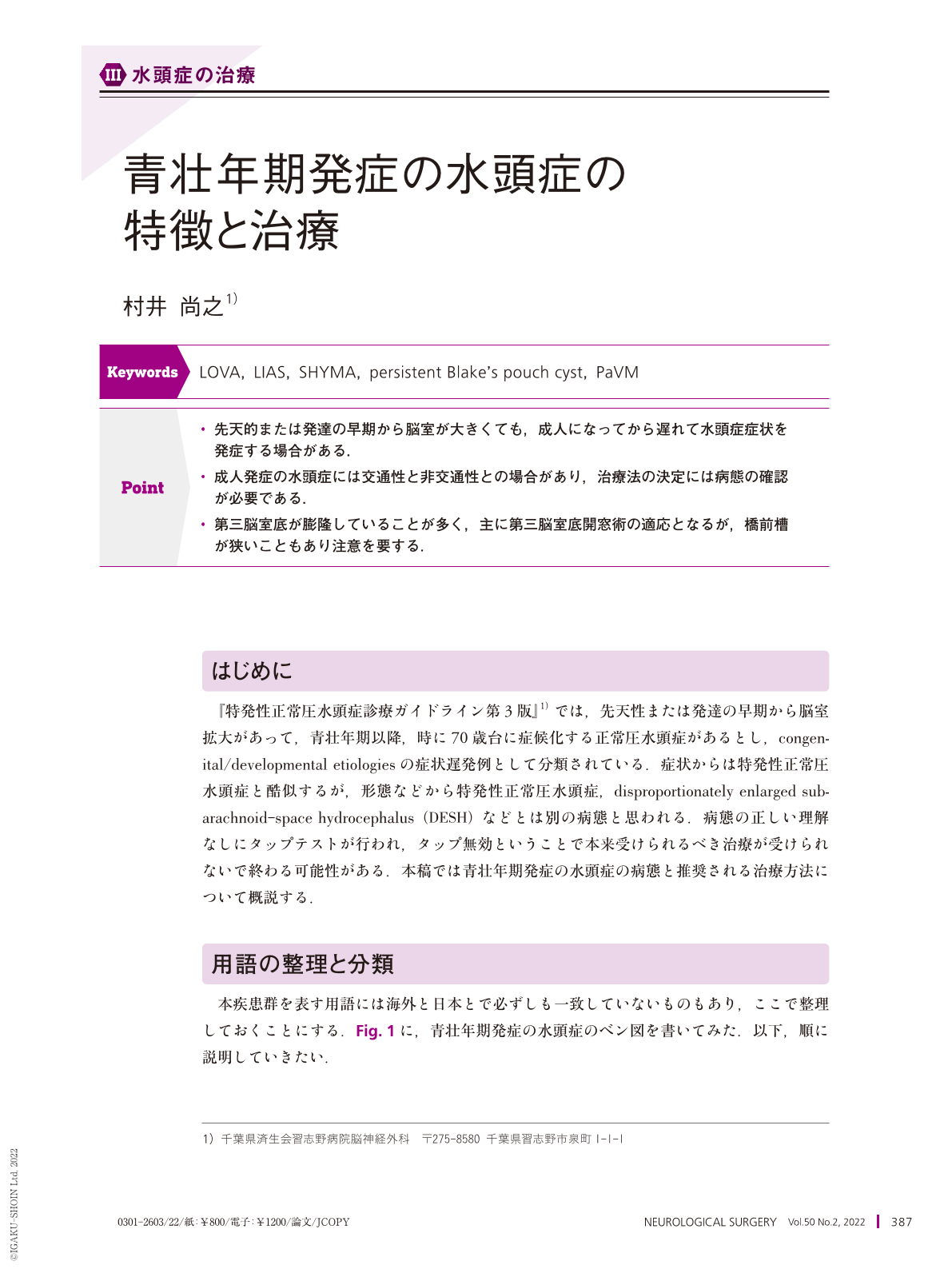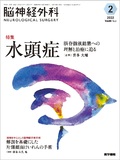Japanese
English
- 有料閲覧
- Abstract 文献概要
- 1ページ目 Look Inside
- 参考文献 Reference
Point
・先天的または発達の早期から脳室が大きくても,成人になってから遅れて水頭症症状を発症する場合がある.
・成人発症の水頭症には交通性と非交通性との場合があり,治療法の決定には病態の確認が必要である.
・第三脳室底が膨隆していることが多く,主に第三脳室底開窓術の適応となるが,橋前槽が狭いこともあり注意を要する.
Certain congenital or developmental anomalies of adult-onset hydrocephalus often share clinical symptoms with idiopathic normal pressure hydrocephalus(iNPH). These anomalies include long-standing overt ventriculomegaly in adults(LOVA), persistent Break's pouch cyst(PBC)and panventriculomegaly(PaVM). Certain patients with adult-onset hydrocephalus might have congenital or secondary etiologies, such as late-onset idiopathic aqueductal stenosis(LIAS), and syndrome of hydrocephalus in young and middle-aged adults(SHYMA). Some of these conditions have unknown etiologies, and the definitions of LOVA differ between Japan and overseas.
Adult-onset hydrocephalus usually presents with chronic onset, with younger patients tending to have headaches and older patients tending to have iNPH symptoms. In cases where the third ventricle floor bulging, endoscopic third ventriculostomy(ETV)is often performed. However, the arachnoid membrane of the pontine cistern might be strong, and the brain stem might be shifted to the clivus due to the enlarged fourth ventricle. For treating such patients, experienced hands might be needed. At present, it is necessary to carefully examine the cerebrospinal fluid dynamics in each patient and select the best test and treatment.

Copyright © 2022, Igaku-Shoin Ltd. All rights reserved.


